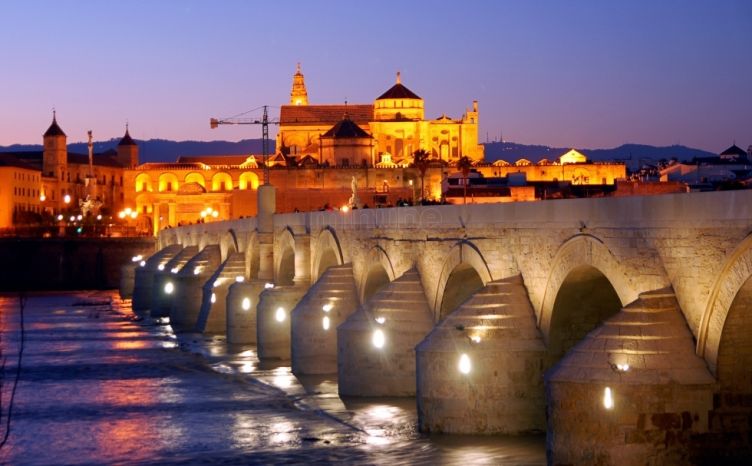Description
Córdoba, capital of Muslim Spain, is the main city in a territory located in the centre of Andalusia. The Guadalquivir river, at its wider middle course, crosses this province from east to west and provides irrigation for a wide plain where cereals, grapevines and olive trees grow.
Towards the north, the landscape becomes progressively wilder until it reaches the summits of the Sierra Morena, with dense forests and abundant wild game for hunting.
In the south, the land rises gradually until it reaches the mountains of the Subbética range. These lands with their limestone soils feature spreading olive groves and white villages and noble towns with well-conserved Baroque architecture.
This mountainous landscape is home to a varied fauna. The province of Córdoba, which still bears traces of its Iberian, Roman and Muslim past, is rich in traditions; it has an outstanding architectural heritage, and its gastronomy has undergone a considerable resurgence with the revival of a range of dishes from the traditional cooking of the region.
Location
The province of Cordoba is located in the north centre of the Autonomous Region of Andalusia. It borders the provinces of Malaga, Seville, Badajoz, Ciudad Real, Jaén, and Granada.
The capital city is Cordoba.
History
Since Palaeolithic times, the province of Cordoba has been marked by the hand of man. The Tartessians and Oretani people fought over these lands and the exploitation of its iron, lead and copper mines.
The Romans conquered it, and were fascinated by its beautiful landscapes and the fertile valley. Numerous constructions throughout the province stand as witness to their presence. After the Muslim expansion across the Iberian peninsula, the territory of the Al-Andalus empire in Cordoba became a major hub for the export of cultural and economic ideas in medieval Europe.
With the independent Emirate established by Abderramán I and the Omeya caliphate of Abderramán III, Cordoba reached the pinnacle of its historical prominence. The teachings of great men –Seneca, Maimonides, Averroes…– spread the splendour and influence of Cordoba all over the world.
After the Christian conquest, the repopulations of the valley of the Guadalquivir by Charles III of Spain and the social unrest in the 19th century, the province changed course towards a new historical destination. Today this privileged enclave in Andalusia is home to a priceless architectural heritage, which will captivate the most demanding traveller.
Landscape
The land in the province of Cordoba spreads between olive groves and grapevines and is bathed by the tributaries of the Guadalquivir river which runs through it from one side to the other and separates it in two: the mountain area of Sierra Morena and the flat countryside of the Guadalquivir. To the south there is another area which is not as extensive, but higher: the Subbética mountain ranges.
Gastronomy
The cuisine of Cordoba, typical of inland areas, includes ingredients such as game, locally produced meat and the abundant fruits and vegetables produced in its gardens and orchards.
Olive oil and the excellent local wine are the perfect accompaniment for this delicious cuisine. Travellers can sample the broad bean casserole, asparagus with scrambled eggs, the cochifrito (fried suckling pig), lamb casserole, the typical migas serranas (fried seasoned breadcrumbs) and the stewed bull’s tail, whose main ingredient comes from the fighting bulls.
The gazpacho and salmorejo (thick gazpacho made with bread) are delicious dishes for tempering the summer heat. The restaurants in Cordoba have also added to their menus Mozarabic dishes such as lamb with honey, a speciality that can be enjoyed all year round.

